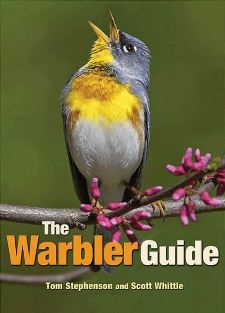 The Warbler Guide
The Warbler Guide
by Tom Stephenson and Scott Whittle
There’s a lot to say about The Warbler Guide, a new photographic guide to North American warblers. There’s so much, in fact, that I can’t fit it all into one review. So in this first part I will go over the heart of the book – the species accounts. In the next, I’ll describe the guide’s many other features and give some thoughts and analysis.
Species Accounts
The accounts spread over six to sixteen pages each, chock full of photos and sonograms. You won’t find extensive text that includes such things as taxonomy and nesting. Everything here was included with the express purpose of helping you ID these birds. Let’s step through a sample account page by page.
The common and scientific names are first, naturally. But then, if you look at this American Redstart account, you see “Adult Male – All Seasons”. When there is enough of a difference within a species – whether male/female, spring/fall, or bright/drab birds – each gets its own sub-account. In the case of this redstart, there are separate ones for adult males and females / first-year males. Next, you will notice some icons. Their purpose is to quickly convey important information. From left to right they are:
- Silhouettes – shows the shape of the species
- Color Impression – a generalized color diagram
- Tail Pattern – underside of the tail (VERY useful)
- Quick Range – fast way to tell what region it’s found in
- Preferred Habitat – where the bird tends to be found
- Behavior – separate icons for six behaviors (in this case sally feeding and tail cocking)
I don’t like it when books use a lot of icons like these; I find it hard to keep them all straight. But in this case they are very easy to understand, though you may have to look up the behavioral icons a couple of times. They do a great job at conveying important information very quickly.
The majority of the first page of each account is devoted to three photos and their captions. The photos are similar in each account; they show the bird facing to the right from the side, 45 degrees below, and directly underneath. Considering how often you see warblers above you, the latter two poses are exceedingly useful. The captions point out a few things to look for, with diagnostic field marks preceded by a check mark.
The second page starts with four unlabeled “distinctive views” showing, up close and personal, important features. “Additional Photos” fill the remainder of the page. These depict other angles and behaviors. Each includes a short caption that you shouldn’t ignore. They expound on what you need to look for and give other interesting facts.
The third page is for comparisons to similar species. At the top it shows the side and underneath photos again, along with the primary field marks. Underneath, there are one or more shots of other birds that may be confused for the given species. The captions concisely explain the differences.
The next page is dedicated to aging and sexing. It includes photos and descriptions that will help the user determine a warbler’s age and sex, when possible. I like to record the age and sex of the birds I see, so I appreciate that it very clearly tells you what classes are and are not separable in both the spring and fall. I can’t tell you how many times I’ve seen a warbler, mostly in the fall, and wondered if there was any way that I could tell if this was an immature or adult. I look forward to practicing on American Redstarts this fall. Maybe I’ll record fewer of them as “yellowstarts” this year.
This page also includes one or two range maps and bar graphs for migration timing. The maps use separate colors for permanent, migration, and main and fringe ranges in both summer and winter (that’s a total of six categories). Arrows show the primary routes. When migration routes differ in spring and fall, two maps are included. The bar graphs indicate the relative timing, length, and intensity of migration.
Yes, there’s more. Next up are one or more pages of sonograms (the redstart has four pages!). If you’re not familiar with sonograms or are intimidated by them, don’t worry. The authors give a fabulous explanation of their system in the guide’s introduction. They include all of the bird’s song types (most warblers have two) and their chip and flight notes. Just as they do with photos, Stephenson and Whittle include comparison species here also.
With practice, you can tell much about a vocalization just by the sonogram, and when you add the authors’ comments, you can all but hear the bird in this section. But if you want to hear it for real, an audio companion pack is available from The Cornell Lab of Ornithology’s Macaulay Library. It costs $5.99 to download, but is essential if you want to use this guide to learn warbler songs.
Seven range-restricted or vagrant warblers (Crescent-chested, Fan-tailed, Golden-crowned, Gray-crowned Yellowthroat, Rufous-capped, Slate-throated Redstart, and Tropical Parula) have abbreviated, two-page accounts. They drop the distinctive views and aging/sexing sections, and have fewer photos and vocalizations overall. But they still include more information than full species accounts in some guides!
I’ve got some quibbles with these accounts (see the full review), but overall I can’t imagine more useful, better designed species accounts for these birds.
Continue to my full review of The Warbler Guide
Posted by Grant McCreary on August 1st, 2013.

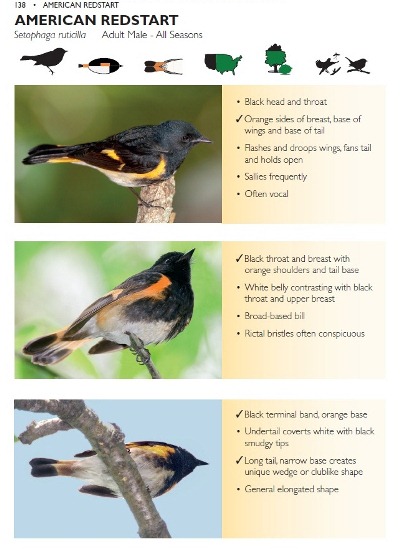
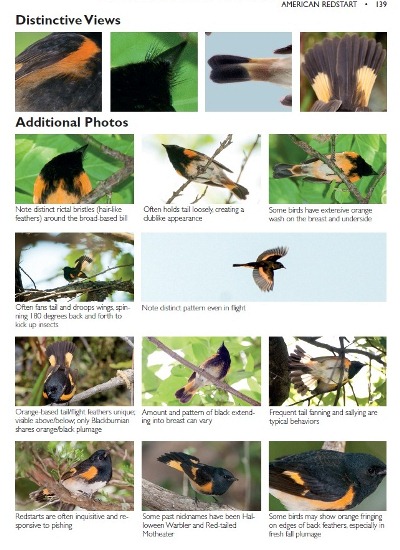
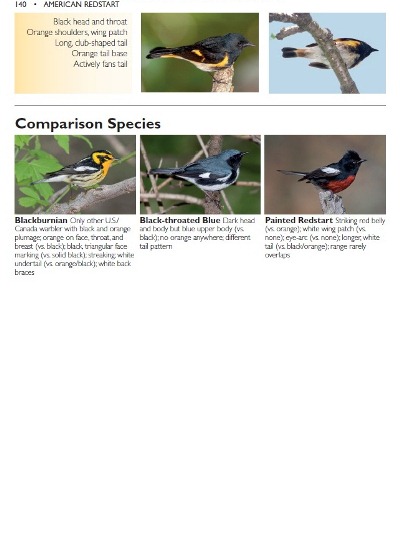
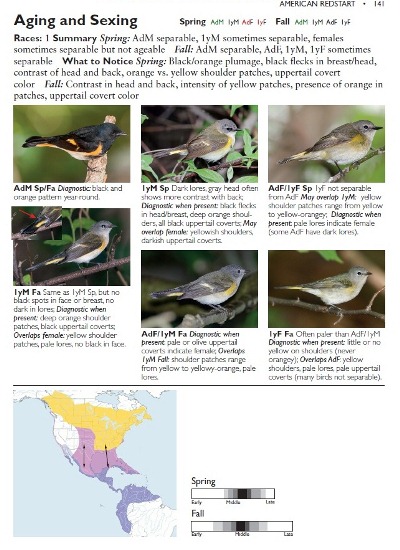
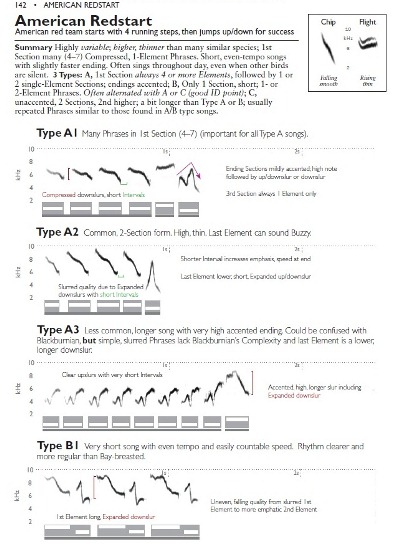




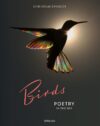
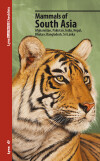
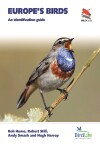
Nicely done Grant. I’m very much looking forward to reading the second part of this review. (Mine has already been filed with BWD and will be published in a forthcoming issue.)
Thanks, John!
This looks like a great guide to use with my kids. Full-color, clear print and very approachable, even to newcomers to the field.
http://squirrelproofbirdfeeders.net/